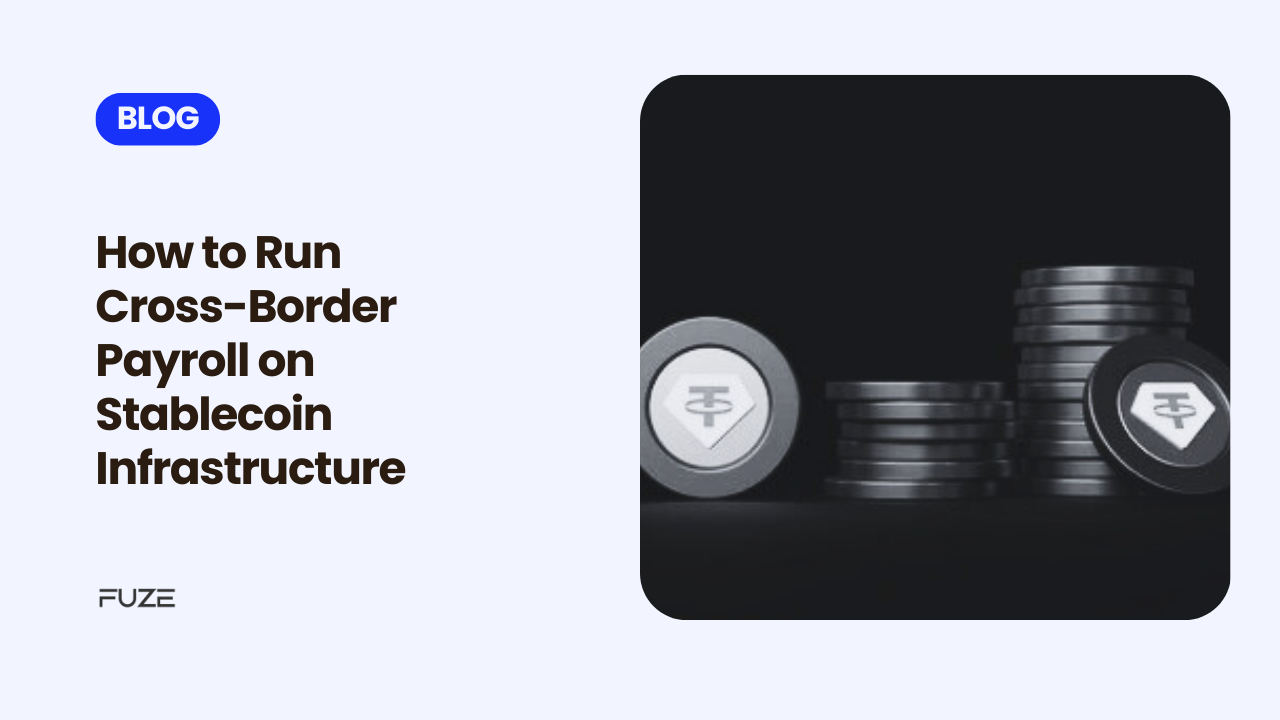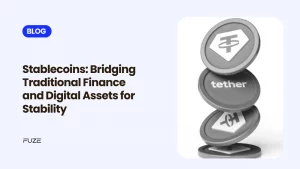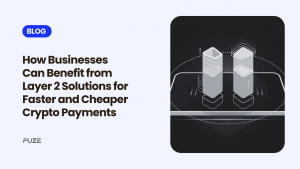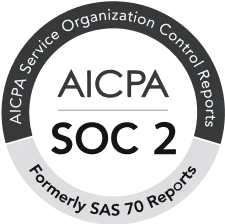Ask any finance team managing payroll across borders, and you’ll hear the same story: delays, high FX fees, middlemen, unclear timelines, and never-ending reconciliation. And the further you stray from major financial hubs, the more complex and costly things get.
Now imagine a system where global payroll runs on-chain: fast, transparent, and programmable, without waiting for traditional bank clearance or paying correspondent banking fees. That is borderless payroll, powered by stablecoins.
In this blog, we explore how businesses are using stablecoins like USDC and USDT to simplify and scale cross-border payroll, especially in emerging markets. We’ll look at the benefits, challenges, and what it takes to actually implement this inside a finance stack.
The Status Quo: Friction and Fees
Traditional cross-border payroll is built on old plumbing. Here’s what that looks like:
- Delays: It can take 3–7 days for funds to arrive, especially in frontier markets.
- High FX spreads and hidden costs: Intermediary banks eat up 3–6% of the transaction value.
- Lack of transparency: Employees often don’t know when or how they’ll get paid.
- Complex reconciliation: Payment failures, partial transfers, and manual processes slow everything down.
For global teams, contractors, and remote employees in regions like LATAM, Africa, South Asia, and the Middle East, this model just doesn’t cut it anymore.
Why Stablecoins Make Sense for Payroll
Stablecoins are digital dollars that move on blockchains like Ethereum, Solana, or Tron. They’re fast, borderless, and transparent by design.
Why finance, operations, and HR leaders are making the shift:
- Speed: Transactions settle in minutes, not days.
- Low cost: On-chain transfers cost less than traditional methods.
- Certainty: No middlemen, no hidden fees. What you send is what they get.
- Global reach: Anyone with a wallet can receive funds, even in underbanked regions.
- Transparency: Every transaction is verifiable in real time on-chain.
For employees and contractors, this means faster, more predictable paydays. For finance teams, it means fewer operational hassles and improved control over global cash flows.
Real-world Use Cases
This isn’t theoretical. Companies around the world are already doing it:
- Tech companies with distributed teams pay remote engineers in stablecoins.
- DAOs and Web3 startups pay contributors directly from on-chain treasuries.
- Freelance platforms offer stablecoin payouts to creators worldwide.
- NGOs and aid organizations send USDC to wallets in regions where local banking is fragile or non-existent.
Payroll is more than just distributing salaries; it’s built on trust. Stablecoin infrastructure can offer more predictability and access than traditional rails.
How It Works: A Simplified Flow
Running payroll on stablecoins doesn’t mean going full DeFi overnight. Here’s what a practical setup can look like:
- Onramp: A business converts fiat to stablecoins via an onramp platform.
- Wallet management: The company maintains a corporate wallet or uses a custodial wallet provider.
- Payroll processing: Finance teams upload a payroll file or trigger smart contract-based disbursements.
- Stablecoin payouts: Employees receive USDC/USDT in their preferred wallets (non-custodial or custodial).
- Offramp (optional): Employees can convert stablecoins to local currency or use them directly.
Fuze helps businesses handle both the on-chain complexity and compliance, while giving end-users an intuitive experience.
Compliance Isn’t Optional
One myth that needs busting – just because it’s crypto doesn’t mean it’s a free-for-all. Compliance matters even more so when you’re moving money across borders.
Businesses need to:
- Conduct KYC/KYB on recipients
- Monitor for AML and sanctions risks
- Track wallet activity for audits
That’s why working with regulated infrastructure providers is crucial. At Fuze, we’re licensed in the UAE and offer tools that automate compliance across jurisdictions while keeping things simple for your ops team.
The Hybrid Approach: Combining Traditional Rails and Stablecoins
Not every employee wants crypto and not every country has legalized it yet. That’s why the smartest setups are hybrid:
- Pay some employees in fiat via virtual IBANs
- Pay others in USDC or USDT
- Offer automatic offramping where needed
This flexibility allows businesses to optimize for cost, speed, and user experience, while staying compliant and locally relevant.
What to Consider Before You Start
Thinking of running cross-border payroll on stablecoins? Here’s a quick checklist:
- Legal & Tax: Understand the regulatory landscape in each employee’s country.
- Wallet Accessibility: Are your team members crypto-native or new to it?
- Volatility: Stablecoins are less volatile than crypto, but still require due diligence.
- Offramp Options: Ensure employees can easily access or convert their funds.
- Support: Choose a provider that offers customer and compliance support.
The Fuze Edge: Making Stablecoin Payroll Simple
At Fuze, we’re making it easy for businesses in the Middle East, Africa, and beyond to integrate digital assets into their financial workflows. Our platform offers:
- Regulated on/off ramps
- Virtual IBANs linked to wallets
- Institutional-grade compliance tools
- Simple APIs to automate payouts
- Multi-currency support
Whether you’re a Web3 startup, fintech, or global business, we help you run cross-border payroll with speed, trust, and full transparency.
Final Word: Payroll as a Growth Lever
In the age of remote work and borderless talent, the ability to pay global teams instantly and efficiently can be a huge competitive advantage.
Stablecoins aren’t just for crypto-native companies anymore. They’re becoming the backbone of modern finance infrastructure, especially in emerging markets where traditional rails fall short.
If you’re still wiring funds across five banks and two time zones, it might be time to make the switch. Talk to Fuze to see how stablecoin payroll can power your global workforce.
Disclaimer: Virtual assets carry significant risks, including high volatility and potential loss of your entire investment. They are not backed by governmental protections, and recourse may be limited in case of loss. Always assess your risk tolerance, fully understand the risks, and seek independent financial advice if needed before investing.
Frequently Asked Questions
1. What are the benefits of using stablecoins for cross-border payroll?
Stablecoins enable near-instant global payouts, lower transaction fees, and eliminate delays from traditional correspondent banking networks. Employees receive funds faster, and employers reduce overhead.
- How does stablecoin payroll ensure regulatory compliance?
Platforms like Fuze integrate licensed payment rails, KYB/KYC checks, and real-time AML monitoring, ensuring that payroll disbursements meet local and international compliance standards.
- Which stablecoins are best suited for payroll use cases?
USD-backed stablecoins like USDC or USDT are commonly used due to high liquidity and global acceptance. For specific corridors, regional stablecoins may offer faster settlement and better FX rates.
- How are employees onboarded for stablecoin payroll?
Employees are either paid into non-custodial wallets or user-friendly, compliant wallets with off-ramps. Platforms can automate onboarding and provide simple UX for wallet setup and fund conversion.
- Can stablecoin payroll integrate with existing HR or ERP systems?
Yes. Modern stablecoin infrastructure platforms offer APIs that connect with HR, ERP, and treasury tools, automating payroll processing, FX conversion, and reporting across jurisdictions.







